

Agridisk
Egypt - Alexandria
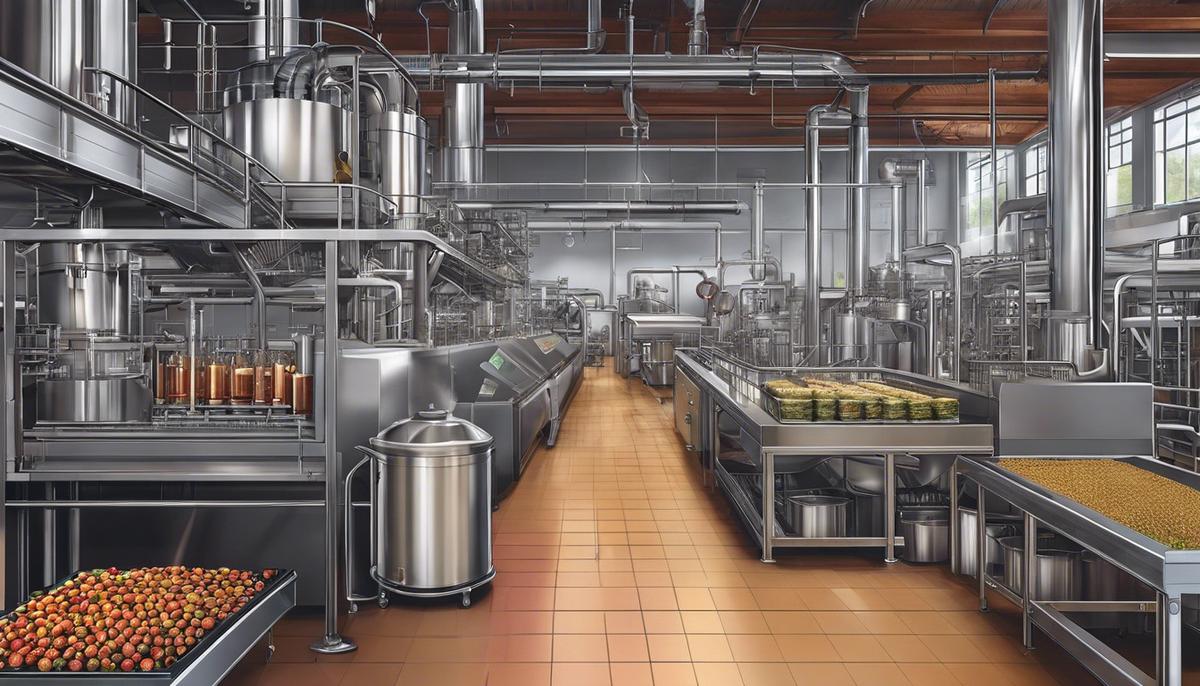
Food And Beverage Manufacturing 2023 & What is the new technology in the food industry 2023?
Description: As we progress further into the digital age, the food and beverage manufacturing industry is undergoing a seismic shift due to advancements in technology, changing consumer behaviors, and regulatory updates. The constant evolution in technology from developments such as artificial intelligence, automation, and predictive analytics is revolutionizing traditional food processing techniques, creating avenues for substantial improvements in efficiency, food safety, and sustainability. Additionally, the industry is witnessing promising trends and emerging forecasts that hold the potential to shape the landscape of the sector come 2023. The augmentation of regulatory considerations and compliance are set to introduce new challenges and possibilities that will invariably alter the modus operandi of the industry. The commitment towards sustainability and efforts towards integrating it into manufacturing processes are coming into sharper focus each day, setting new benchmarks for energy efficiency and emphasizing waste reduction. This write-up aims to capture the essence of these fundamental transformations, how they are poised to redefine the future of food and beverage manufacturing. As we step forward into the future, the continuous evolution of food processing techniques has become increasingly essential in navigating the increasingly complex web of challenges of our new world. Standing at the doorstep of 2023, it is quite fascinating to delve into how the field of food processing is addressing several significant challenges through innovation and technology. One cannot discuss this proliferation without acknowledging the implications of the global pandemic that has drastically affected the food industry in more ways than one. The impact of COVID-19 has pivoted the globe towards a heightened emphasis on food safety. Hence, recent years have seen a surge in advancements focused on bolstering safety in food processing. Ultraviolet (UV) and pulsed light technologies, already utilized for their potential in pathogen deactivation, are now witnessing cutting-edge enhancements. The goal is not just to promote food safety, but to do so without compromising taste, texture, and nutritional value—a fundamental challenge that experts are determined to tackle. The global shift towards clean and sustainable practices is another critical challenge that food processing technologies are responding to in equal measure. Experts across the globe have begun exploiting high pressure processing (HPP), a non-thermal technique that helps retain food's nutrients and prolongs shelf life. As a potentially revolutionary tool, its potential to reduce food waste by extending product freshness is unmistakable. Synthetic biology also has a role to play in this wave of transformation. The rise of cell-based meat—the literal growing of meat from animal cells—offers the potential for more sustainable and ethical meat production. Although nascent, the strides made in this field signal a paradigm shift in how food systems may function in the years to come—an exciting prospect indeed. Likewise, precision fermentation, another innovation born from synthetic biology, has been making its presence felt. An elegant science, it involves programming microorganisms to produce complex organic compounds. The most talked-about application? Animal-free dairy products, a direct response to the increasing demand for plant-based alternatives. Moreover, the power of data cannot be overstated. As we burn the midnight oil towards an era of 'smart everything', food processing techniques have started to lean on machine learning for optimization and automation. Streamlining processes, reducing manpower requirements, and enhancing efficiency—this digital makeover is fast becoming an irreplaceable cornerstone in our journey into 2023 and beyond. In conclusion, the convergence of necessity and technological innovation has ushered in an era of unparalleled growth in the realm of food processing. As numerous as the challenges may be, the field's relentless evolution to meet and overcome them is nothing short of inspiring—a testament to its resilience and determination. As we cross the threshold into another exciting year, it certainly spells out an interesting time for the world, to watch and learn how these innovative technologies shape our future. One can only watch with bated breath and wonder what remarkable innovations the next few years have in store. In every challenge, thus, lies the seed of opportunity—an opportunity for growth, advancement, and transformation. Indeed, the future of food processing techniques is bright with promise, as we continue this journey to meet the needs of tomorrow while constantly pushing the boundaries of possibility. In 2023, the landscape of the food and beverage manufacturing industry will continue to evolve in order to reach new innovative horizons. This endeavor will be propelled by the deep-seated transition from traditional to more tech-driven practices, fortifying pillars of sustainability, ethical food production, and automated processes. It is vital to acknowledge the undeniable influence of emerging health trends in sculpting the food and beverage manufacturing industry’s future. As consumers become more health-conscious, the industry must adapt and reshape its manufacturing paradigms. In 2023, probiotics, with their connotations of gut health and wellness, are projected to gain more traction in a wide assortment of food products. As we approach the era of 'functional foods,' food engineers will need to formulate innovative techniques to incorporate these beneficial bacteria into daily food products without compromising taste or texture. Simultaneously, with the rise in conscious consuming, more consumers demand transparency about their food origins and processing methods. The 'farm-to-fork' trend is anticipated to give rise to more traceability practices in the food supply chain, expedited by Blockchain technology. Expect to see an upsurge in farm-to-fork narratives and traceable supply chains revealing the journey of the food item from production to the final consumer. Furthermore, with the increased focus on sustainability and cutting down Resource waste, upcycling may emerge as a buzzword in the 2023 food industry. The concept of food waste upcycling, which involves converting food by-products or waste into new, high-value food ingredients, will take center stage, directing food producers towards a zero-waste approach. Regarding beverage manufacturing, ready-to-drink products (RTDs) are predicted to witness unprecedented growth. Non-alcoholic, healthy and functional beverages comprising natural ingredients, vitamins, and minerals will capture a significant market share, eroding the domination of heavily processed, artificial drinks. This includes the popularization of flavored water, cold brew coffee, functional juices, and kombucha – a trend accelerated by an emerging consumer preference for convenience and health. In 2023, the synergy of additive manufacturing, commonly known as 3D food printing, and personalized nutrition is expected to uncover a new horizon. By precisely adjusting the ingredients, this technology can contribute to personalized food production based on individual nutritional requirements. The widespread adoption of 3D food printing can transform the industry from mass production to customized manufacturing, although it still remains a challenge from a commercial production standpoint. Advanced robotics and automation will also bolster the industry's capacity in 2023. The seamless integration of robotics will improve productivity, reduce workforce risks, and offer more precision in tasks that humans find challenging. Predictive maintenance powered by AI will also be critical in minimizing breakdowns and reducing cost and time inefficiencies in the production process. In conclusion, the food and beverage manufacturing industry is on the cusp of significant transformation sparked by the unique fusion of technological advancements, changing consumer preferences, and an uncompromising drive towards sustainability. The realization of these trends is a challenging yet achievable task that will refine the industry’s direction thrusting it towards new opportunities in 2023 and ahead. As we approach 2023, we anticipate a number of regulatory changes that are set to shape the landscape of food and beverage manufacturing. Emerging health trends, tech-driven practices, sustainability, transparency, and modern technological advancements will all play significant roles. In response to a global health-conscious trend, the food and beverage industry will see a rise in probiotics' incorporation into various types of food products. These live microorganisms known for their health benefits are gaining popularity. Regulations may, hence, need to be adjusted to ensure these new products are safe for consumer consumption, while accurately representing their purported health benefits. The rapid advancement of technology will heavily influence traditional food and beverage manufacturing practices. For example, the cutting-edge technology of 3D food printing presents opportunities for greater personalization in nutrition. This promises to revolutionize the industry by enabling the production of custom-made food, tailored to individual dietary needs. Moreover, the application of robotics and automation will yield improved productivity and precision. Anticipated regulations will likely provide guidance on their safe and effective use, calling for greater vigilance in ensuring product quality and safety. The drive for sustainability will underscore a shift towards upcycling in the industry— transforming by-products, waste materials, or unwanted products into new materials of better quality or environmental value. Regulatory dimensions will need to prioritize eco-friendly practices, fostering an industry-wide respect for the planet. The rise in consumer demand for natural, functional beverages is leading to the growth of ready-to-drink products. Regulatory bodies will need to keep a close watch on these processes to ensure they uphold standards regarding quality, safety, and health benefits. In parallel, the importance of traceability is surging. Transparency in the food supply chain can assure consumers of the origin and safety of their food. Regulatory changes should be expected to further emphasize the importance of comprehensive product labeling and tracking systems. Artificial Intelligence (AI) and predictive maintenance have the potential to reduce breakdowns and inefficiencies significantly in the industry. Regulations need to catch up with these technologies to harness their potential while ensuring that they are integrated safely and ethically into prevailing practices. The anticipated regulatory changes are thus likely to shape 2023 as a transformative year for the food and beverage manufacturing industry. It sees tech-driven practices, health-centric shift, sustainable strategies, and transparency taking center stage to drive innovation and consumer trust. These changes, whether in regard to product development, manufacturing, or supply chain, indicate a promising future, replete with opportunities for growth and advancements. Enveloping the science of our survival, the food and beverage manufacturing industry clutches the core of societal functionality and health. As the terrain of 2023 begins to unfold, ardently observed trends indicate a new wave of sustainability surfacing throughout the processing and production pipeline of edibles. Initiating with the remarkable incorporation of probiotics into food items, there's a clear pivot to the fortification of manufactured foods with a beneficial biotic army. This momentum, spurred by a growing aspiration for gut health among consumers, is an exemplar showing that sustainable trends needn’t compromise health or indeed nutritional inflation, suggesting dichotomy can become synergy in food technology. Transparency has surfaced as a non-negotiable factor within the food industry. The rise of blockchain technology and other traceability methodologies fundamentally reshapes the food chain by fostering full visibility. Our global citizens have an evolving hunger for authenticity and origin-identity, pressing the industry for an immaculate traceability scoring model. Simultaneously, 3D food printing appears to bolster personalized nutrition, a science that simplifies the complexities of personal health into ingestible iterations. This technology holds potential to remove nuance from nutrition with geometric precision, pulling in another layer of regulatory control and individual empowerment into the food concept. Sustainability, an omnipresent buzzword, appears revitalized within this landscape, morphing into a different physiology altogether. A trend towards upcycling prompts us to rethink not just waste but also food design. Gleaning value from undervalued resources or leftover remains strikes a chord of optimization and eco-conscientious processing. On a parallel track, the beverage industry sways towards the prodigious growth of ready-to-drink natural and functional beverages. Innocuous water morphs into a nutrient-dense drink while pure tea gets a bubbly kombucha makeover. These drinkable divergences carry the badge of authenticity, traceability, and most importantly, sustainability. As technologies unfurl, the potential for smart integration magnifies. Robotics and automation stand not as a menace but an indispensable solution to improve efficiency and exactness, ensuring fewer errors, less waste, and subsequently, lower carbon footprints. Furthermore, the application of Artificial Intelligence (AI) and predictive maintenance work in tandem to pre-empt failure, prolonging the longevity of energy-intensive equipment. Rounded off by the anticipation of regulatory changes, which are expected to further drive sustainability and transparency, it is certain that sustainability in the food and beverage manufacturing scene of 2023 has been recast into an expansive model of the intertwined future. Opportunities for industries to catalyze change, streamline operations, and enhance their environmental standing are ultimately burgeoning forth, zealously reshaping tomorrow's plate. Food and beverage manufacturing stands at the precipice of an evolutionary shift in 2023, with technology serving as the engine of progress. This article explores how technology is transforming this industry, revolutionizing age-old practices while nurturing advances not previously fathomable. One can instantly note the paradigm shift from traditional to technology-driven operations in food and beverage manufacturing. Indeed, manufacturers are increasingly leveraging the power of robotics, automation, and artificial intelligence (AI). These tools equip producers with precision, efficiency, and predictability in their operations, consequently eliminating human error, increasing productivity, and reducing operational costs. Evidently, the focus is no longer merely on production; the emphasis now extends to the health and wellness dimensions of consumer goods. Manufacturers are capitalizing on this trend, incorporating probiotics into a myriad of food products to promote gut health and boost the immune system. This resonates with the general consumer shift towards health-centric foods, offering manufacturers a vast marketplace. Simultaneously, 'personalized nutrition' has emerged as a captivating trend, and 3D food printing lies at the heart of it. With the capability of customizing ingredients, manufacturers can meet individual dietary requirements with a high degree of precision. This innovative technology heralds the dawn of a new era in food production. Another transformative area is the shift towards environmental sustainability. Upcycling – converting waste materials into new products – is gaining traction in the industry. This practice aligns with consumer preferences for eco-friendly products, offering businesses a unique competitive advantage. The upsurge in transparency and traceability in the food industry points to a drive for increased accountability. Aided by blockchain technology, every step of the supply chain, from farm to fork, can be closely monitored, assuring quality and safety. Capitalizing on the health-conscious trend, manufacturers are also turning towards natural and functional beverages. The market for ready-to-drink products is rapidly growing, pointing to an era where convenience meets health. The use of artificial intelligence in predictive maintenance demonstrates how advanced technology reduces inefficiencies. AI-based systems can predict malfunctions before they occur, allowing for proactive maintenance that minimizes downtime and maximizes productivity. The regulatory landscape is also expected to adapt to this new reality. Innovations such as cell-based meat, precision fermentation, and 3D printed foods require the introduction of new laws and regulations. Therefore, anticipating these changes and preparing for them is crucial for industry players. In conclusion, technology integration is crucial to meeting expectations for safety, sustainability, traceability, and nutrition in the food and beverage industry. With prevailing trends in 2023 guiding the path, the industry is set to witness a period of significant transformation and growth. Technology is no longer the future; it is the thriving pulse of modern food and beverage manufacturing. As the industry stands on the precipice of massive evolution, staying informed and adaptive will be key to leveraging the opportune scenarios shaped by technological advancements, regulatory considerations, consumer behavioral shifts, industry trends, and burgeoning sustainability practices. Technologies like blockchain, AI and big data analysis are not just transformative tools for enhancing quality control and strategic planning, but they also address virulent industry challenges and unravel untapped arenas for innovation in food and beverage manufacturing. The future, set on an inexorable course towards an increased emphasis on sustainability, promises an industry that thrives via energy-efficient practices, reduced waste, and a resolute commitment to reducing carbon footprints. These defining elements concisely capture the contrast between the industry's current stance and its potential trajectory, with peculiar emphasis on aspects that warrant attention in the decisive year of 2023. As we gaze upon the horizon of the food industry, it becomes increasingly clear that technological innovation is a driving force shaping the future of how we produce, package, and perceive our food. From farm to table, groundbreaking advancements are unfolding before our eyes, designed to address a myriad of pressing issues facing our global community. These leaps forward range from critical enhancements in food safety and traceability to revolutionary changes in the way we cultivate and consume our sustenance. As we delve into the most recent and noteworthy technological developments within the food industry of 2023, we begin to understand the profound influence they exert not only on the industry's infrastructure but on the environmental, ethical, and economic landscapes as well. The ceaseless march of technology continues unabated, bringing about transformative changes in myriad sectors, including the critical domain of food safety and traceability. As we stand at the forefront of 2023, significant strides have been made in technology, directly enhancing both the safety and the traceability of food products from farm to table, engendering a paradigm shift in the global food supply chain. One seminal technological breakthrough in 2023 is the implementation of blockchain-based systems into the food industry’s logistical framework. Blockchain's inherent nature of decentralization, transparency, and immutable record-keeping offers unparalleled traceability and accountability at every juncture of the food supply chain. By leveraging this technology, each transaction associated with a food product is recorded and can be accessed by stakeholders, allowing for real-time tracking of the product's journey. This makes the detection of food safety hazards—be they accidental contamination or deliberate adulteration—a comprehensively documented exercise, thereby greatly minimizing the risks posed to end consumers. In tandem with blockchain, advancements in sensor technologies have augmented food safety measures. Sensors that track and report data regarding temperature, humidity, and even potential chemical contaminants are being deployed across transportation and storage facilities. These intelligent systems ensure that food products are maintained within optimal conditions, thereby reducing spoilage and preventing the growth of pathogens. When integrated with the Internet of Things (IoT), these sensors can transmit crucial data instantaneously to stakeholders, ensuring immediate response to any deviations from set safety norms. Genome sequencing technology, too, has carved a niche for itself by dramatically expediting the identification of pathogens in food. Through metagenomics sequencing, a comprehensive picture of foodborne microorganisms can be obtained, aiding in the swift pinpointing and control of disease outbreaks. The refinement of rapid testing kits, which leverage this technology, renders such advanced diagnostics more accessible and efficient than ever before. Additionally, Artificial Intelligence (AI) has ushered a renaissance in food safety and traceability. AI algorithms analyze vast amounts of data from diverse sources, including historical contamination events, current production data, and environmental conditions, predicting potential safety breaches before they occur. This predictive approach allows food producers and regulators to adopt a more proactive rather than reactive stance on food safety, presaging a future where foodborne illnesses are significantly diminished. While these technologies undoubtedly represent an enormous leap forward in food safety and traceability, it must be acknowledged that their full potential is contingent upon widespread acceptance and uniform application across the global food industry. It is imperious that collaborative efforts between technologists, food producers, regulators, and consumers continue to drive the integration of these technologies, ensuring that the collective benefit is as profound and as equitably distributed as possible. The convergence of these new technologies in 2023 bears the promise of a new epoch wherein the production, distribution, and consumption of food are governed by an unyielding commitment to safety and transparency. This future is one where food-borne uncertainties are a relic of the past, giving way to an era of informed trust and wellbeing for consumers worldwide. Automation and robotics have become integral components in the modernization of food production, extending capacities beyond the conventional realms of human labor and oversight. As these technologies continue to evolve, their implementation is profoundly reshaping various segments of the food industry. At the forefront of this technological revolution is the advent of precision agriculture. Here, robotics serve as pivotal agents in performing tasks such as planting, weeding, fertilizing, and harvesting. Coupled with detailed data analytics, these machines provide farmers with unprecedented control over crop management. The meticulous nature of robotic systems enables the precise application of inputs like water and pesticides to the areas that specifically require them rather than blanket application. This targeted approach not only bolsters yield but also mitigates the environmental impact of farming practices by reducing chemical run-off and conserving resources. In the realm of food processing, automation has introduced a new epoch of efficiency and safety. Robotic arms, equipped with sensors, are utilized for repetitive and high-precision tasks such as sorting, cutting, and packing food products. These robotic systems are designed to handle raw materials with a level of consistency and accuracy unachievable by human workers. Moreover, the intrinsic characteristics of robots—particularly their endurance and resilience to hazardous environments—make them ideal for working in conditions that might pose health risks to humans, such as in extreme temperatures or when handling contaminated products. The integration of robots in food production facilities also plays an essential role in meeting the ever-increasing demand for consistency and speed in food manufacturing. By working at a constant pace without the need for breaks, robots significantly boost productivity levels. This not only helps in keeping up with the demands of a growing global population but also enables food producers to swiftly adapt to market changes and consumer preferences. Moreover, robotics in food packaging is enhancing efficiency and reducing waste. Innovations like intelligent packaging systems enable precise portioning and more effective sealing techniques, thereby extending the shelf life of food products. This, in turn, contributes to the reduction of food spoilage and waste—a pertinent issue in the quest for sustainable food production. What cannot be overlooked is the need for skilled personnel to operate, maintain, and innovate these robotic systems. As such, the evolution of automation and robotics in food production is concurrently generating a demand for a new wave of expertise in the field. This symbiotic relationship continues to fuel advancements in food technology as well as foster a dynamic workforce. It is evident that automation and robotics are not transient trends but rather pivotal components in the ongoing transformation of food production. Their role is multifaceted, spanning from field to fork, and their potential to enhance food safety, improve efficiency, and reduce waste is substantial. While challenges, such as the high initial investment costs and the need for skilled labor to manage these technologies, are present, the overarching trajectory signals a future wherein robotics are integral to the sustainability and resilience of food systems worldwide. The emergence of new technology continues to revolutionize sustainable food packaging solutions, heralding an era where environmental concerns are intimately addressed alongside economic and safety considerations. Noteworthy advancements in this regard include the development of biodegradable and compostable materials, which promise to reduce the reliance on traditional plastics that have long posed a challenge to ecosystems due to their persistent nature and resistance to degradation. Biodegradable packaging materials, engineered to break down within a relatively short period under specific conditions, are becoming increasingly prevalent. Derived from natural sources, such as plants, these materials include biopolymers like polylactic acid (PLA) which is manufactured through the fermentation of carbohydrates. Another innovative material is mushroom-based packaging, which utilizes mycelium, the fibrous root system of mushrooms, to produce a robust yet entirely compostable alternative to styrofoam. Compostable packaging takes sustainability one step further by not only degrading but also contributing to soil fertility. These packaging materials break down into non-toxic organic matter, augmenting nutrient content and supporting soil health. This aligns with the zero-waste movement, encouraging a cyclical economy where product life cycles are closed-loop systems, and end-of-life is considered at the design stage. Another technological stride pertains to the utilization of nanotechnology in the development of food packaging. Nanoparticles are employed to enhance barrier properties, thereby improving the shelf-life of food products without the extensive use of synthetic preservatives. Additionally, nanosensors may be integrated into packaging to monitor the freshness of food, alerting consumers of spoilage or potential health risks through changes in color or other detectable signals. Edible packaging technology presents a radical yet promising avenue, seeking to eliminate food packaging waste entirely. This nascent technology explores the creation of consumable packaging films made from natural food-grade ingredients. The potential of edible packaging lies in its ability to curb post-consumer waste significantly. Furthermore, digital printing technology is making strides in the realm of sustainable food packaging. Advances allow for printing with non-toxic, food-safe inks, providing an alternative to traditional labelling methods that often involve adhesives and additional material layers that can complicate recycling or composting processes. Finally, the integration of supply chain management software with sustainable packaging options serves to maximize efficiency while minimizing unnecessary wastage. Such platforms aid in determining optimal packaging types and sizes based on product and shipping requirements, thereby streamlining resource utilization. In conclusion, the forward march of technology presents palpable opportunities for sustainability within food packaging. These emerging technologies, encompassing biodegradability, compostability, nanotechnology, and beyond, offer a pantheon of eco-friendly alternatives to traditional materials. As the cycle of innovation continues, it is imperative to embrace these solutions to secure a future where food packaging is not at odds with our environment but coexists within it harmoniously. Technological Innovations in Cultivation and Production of Plant-Based and Lab-Grown Foods The realm of plant-based and lab-grown food production stands on the precipice of revolutionary changes, propelled by technological advancements. The development of cellular agriculture and plant-based protein synthesis is no longer confined to the theoretical but is rapidly materializing into consumer products aided by cutting-edge technology. Cellular agriculture, the practice of cultivating animal cells in vitro to create products akin to meat, dairy, and eggs, employs bioprocessing technology. This technology requires sophisticated bioreactors where cells are nurtured to proliferate and develop tissues. Innovations in bioreactor design have led to increased efficiency and scalability, making lab-grown food a more accessible option in the market. Similarly, plant-based proteins are being refined through high moisture extrusion technology, which can mimic the texture and fibrous structure of animal meat. Innovating the sensors and processes within these extruders provides a more authentic sensory experience for alternatives to traditional animal products. The field also witnesses the integration of bioinformatics — a multidisciplinary field that combines biology, computer science, and information technology. This allows for the optimization of protein structures and flavors by identifying plant-based protein sources with ideal characteristics for human consumption and then modifying or combining them through computational models to enhance taste and nutritional value. Furthermore, tissue engineering techniques are crucial in the craft of lab-grown foods. Scaffold development, for example, has seen substantial growth. The production of scaffolds from edible materials that support cell growth into three-dimensional structures is key to achieving textures and forms akin to conventional meat cuts. Nutrient supply systems within bioreactors have evolved through precision fermentation technologies. This ensures that cultured cells receive the necessary nutrients in accurate proportions, thereby optimizing the growth media and reducing waste production in the process. The progression in gene editing tools, such as CRISPR/Cas9, provides a path forward to optimize plant characteristics quickly and accurately. Traits such as increased yield, pest resistance, or enhanced nutritional profiles can be seamlessly inserted into plant genomes, catalyzing a new era of plant-based products with superior qualities. Lastly, the coupling of machine learning and predictive analytics with these technologies enhances the ability to simulate and forecast the outcomes of various cultivation conditions. As a result, this allows fine-tuning of the production process, minimizing trial and error, thus accelerating the pace of innovation while mitigating resource expenditure. As the technologies advancing both plant-based and lab-grown food production mature, their integration into existing systems holds the promise of sustainable, efficient, and humane alternatives to traditional animal agriculture. It is a sector marked by relentless pursuit of innovation, and one whose trajectory remains steadfastly upward as these remarkable technologies continue to evolve and converge. As we forge ahead into the frontier of food science and technology, it becomes paramount to understand the mechanisms that have the potential to revolutionize the way we perceive nutrition and food processing. This exploration serves to delineate the evolving landscape of novel food processing technologies that have arisen as pivotal agents of change in 2023. Emergent within this year is the deployment of pulsed electric field (PEF) technology in the realm of food preservation. PEF employs short bursts of high voltage to permeabilize cell membranes in fruits, vegetables, and other cellular foods. This process enhances the extraction of juices and active compounds, simultaneously mitigating the microbial load, thus extending shelf-life while preserving nutritional value. Ultrasound processing also continues to earn acclaim, utilizing high-frequency sound waves to agitate particles in food substances. This agitation facilitates various applications, from emulsification to tenderizing meat, and even homogenization of dairy products. What makes this technology particularly intriguing is its capacity to preserve food quality while enhancing physical, microbiological, and chemical properties without the addition of heat. Developments in cold plasma technology, a state of matter consisting of charged particles, healthy radicals, and various electronic and ionic species, afford a multitude of applications in food safety. Cold plasma effectively deactivates contaminants on food surfaces, such as pathogens and pesticide residues, heralding a step forward in non-thermal food processing technologies. Additionally, the realm of sustainable production has witnessed the inception of 3D food printing, which endeavors to transform the manufacturing of complex food items. This technology promises customization of nutrition, shape, flavor, and texture, thereby catering to individual dietary requirements while minimizing food waste. The ramifications of these burgeoning technologies are extensive and sweeping. They signify the advent of an era characterized by heightened efficiency, environmental stewardship, and safeguarding human health. The synergy of these novel methodologies with previously established systems is poised to generate an integrated, forward-thinking approach to food processing. Thus, it becomes imperative for fields of academia, industry, and regulatory bodies to remain agile, embracing these advancements for the collective benefit of society and the realm of food science. The Extent to Which AI and Big Data Provide Insights into Consumer Preferences At the confluence of technology and consumer goods sits an untapped reservoir of potential: the use of Artificial Intelligence (AI) and big data in deciphering intricate patterns of consumer preferences. The emergence of these tools provides a transformative opportunity for the food industry to cater to individual tastes and preferences while optimizing their product development and marketing strategies. AI has evolved to become an indispensable asset for discerning consumer trends. Machine learning models, which are a subset of AI, can analyze vast repositories of unstructured data—such as social media posts, product reviews, and consumer behavior online—to gain real-time insights into consumer habits and preferences. These insights can inform product innovation, forecast demand, and tailor marketing strategies to individual consumers, resulting in a more personalized shopping experience. Big data, characterized by its large volume, velocity, and variety, offers a comprehensive overview of consumer transactions and interactions. When analyzed effectively, this data can reveal patterns in purchasing behavior, frequency of purchases, peak buying times, and product preferences. By analyzing these patterns, businesses can pinpoint specific customer needs and modify their supply chain decisions, inventory management, and promotional campaigns accordingly. Furthermore, sentiment analysis, a facet of AI, deciphers the emotional tone behind consumer communications and feedback. This specialized analysis allows companies to understand the emotional drivers behind consumer choices and adjust their messaging to resonate more profoundly with target audiences. In a more traditional product development setting, such nuanced insights could take years to obtain, but AI and big data technologies can shorten this to a matter of days or even hours. The symbiosis between AI and big data and the food industry has also catalyzed the growth of subscription-based services and recommendation systems. Using predictive analytics, companies can suggest products that align with consumers' historical purchasing patterns, increasing the likelihood of continued engagement and customer loyalty. Another significant application is in supply chain optimization. Spanning beyond the capability to track and manage inventory, AI and big data allow for a predictive approach to stocking and logistics, foreseeing potential disruptions and consumer demand surges—ultimately leading to a more agile and responsive supply chain. However, a precise understanding of consumer preferences also raises concerns around privacy and data protection. Ensuring that consumer data is collected, stored, and analyzed with the utmost respect for privacy is paramount. As such, companies are called to implement robust cybersecurity measures and adhere to strict data governance standards. In conclusion, the incorporation of AI and big data in the food industry harbors the potential to revolutionize not only the way consumers select and purchase their food but the foundational strategies behind product development, distribution, and marketing. The insights gleaned from these technologies are driving a more nuanced understanding of consumer behavior, thereby enabling a more efficient, responsive, and consumer-centric food industry.Food And Beverage Manufacturing 2023 & What is the new technology in the food industry 2023?
Food and beverage manufacturing 2023
Novelties in Food Processing Techniques

Industry Trends and Forecasts | Food And Beverage Manufacturing 2023

Regulatory Considerations and Compliance | Food And Beverage Manufacturing 2023

Sustainability in Food Manufacturing | Food And Beverage Manufacturing 2023
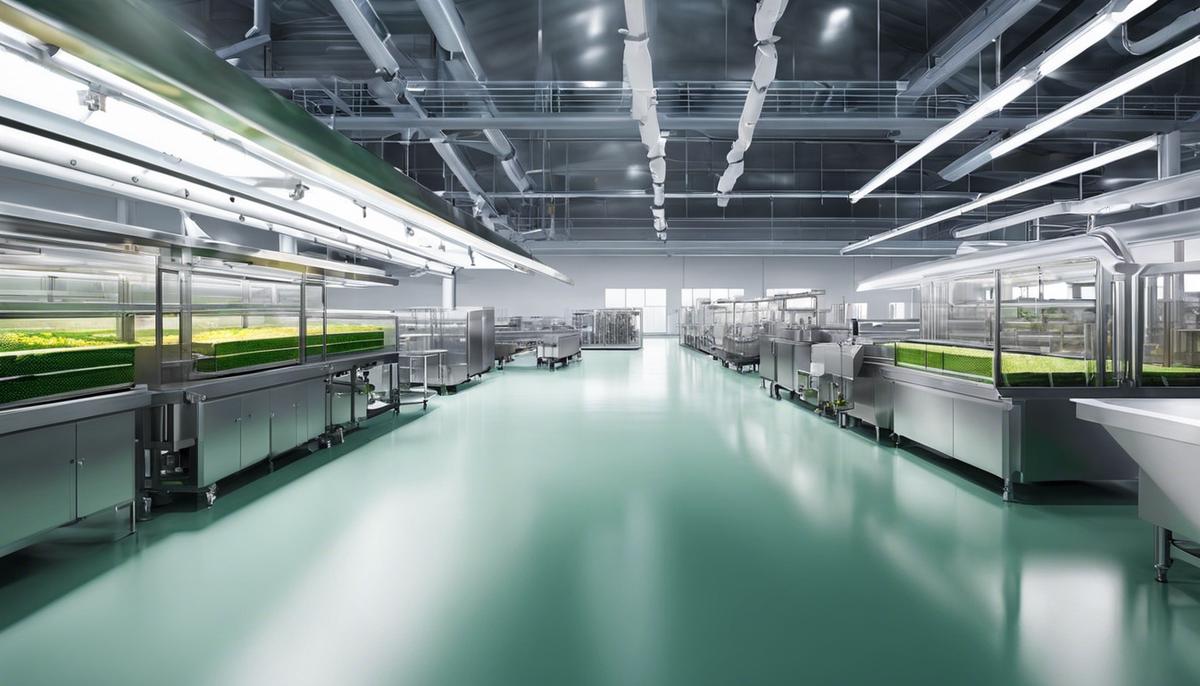
The Integration of Technology | Food And Beverage Manufacturing 2023
Revolutionizing the Beverage Industry with Technological Integration
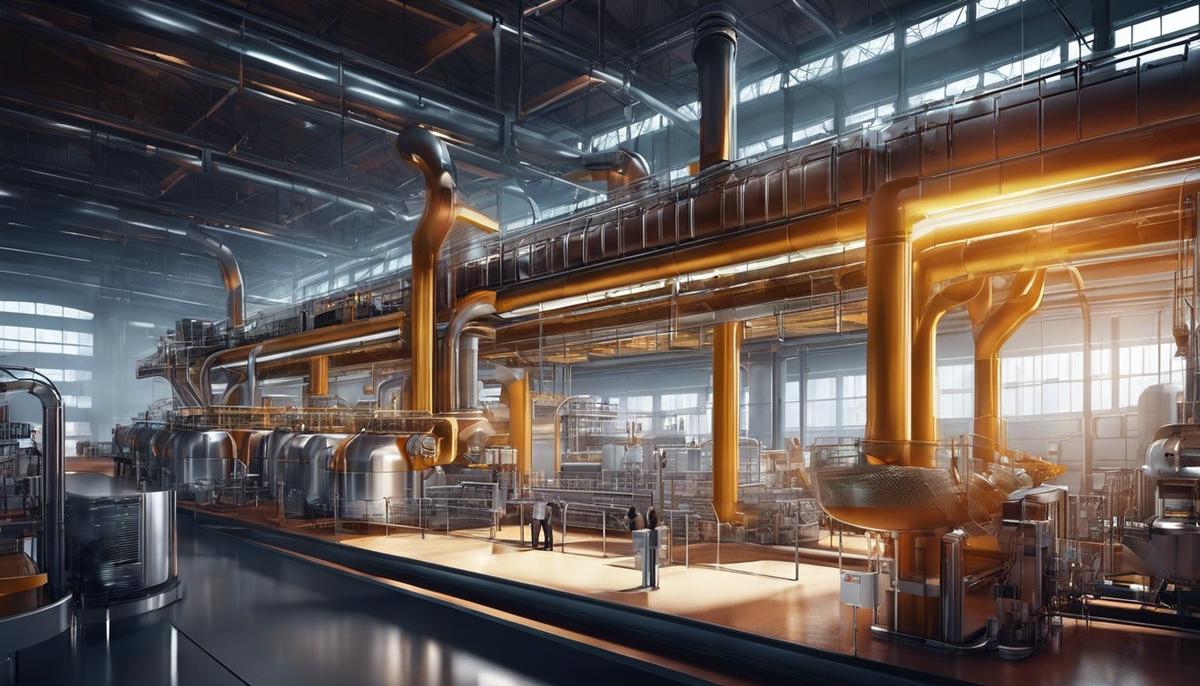
What is the new technology in the food industry 2023?
Advancements in Food Safety and Traceability
Advances in 2023: Pioneering the Future of Food Safety and Traceability

Automation and Robotics in Food Production

Sustainable Food Packaging Innovations
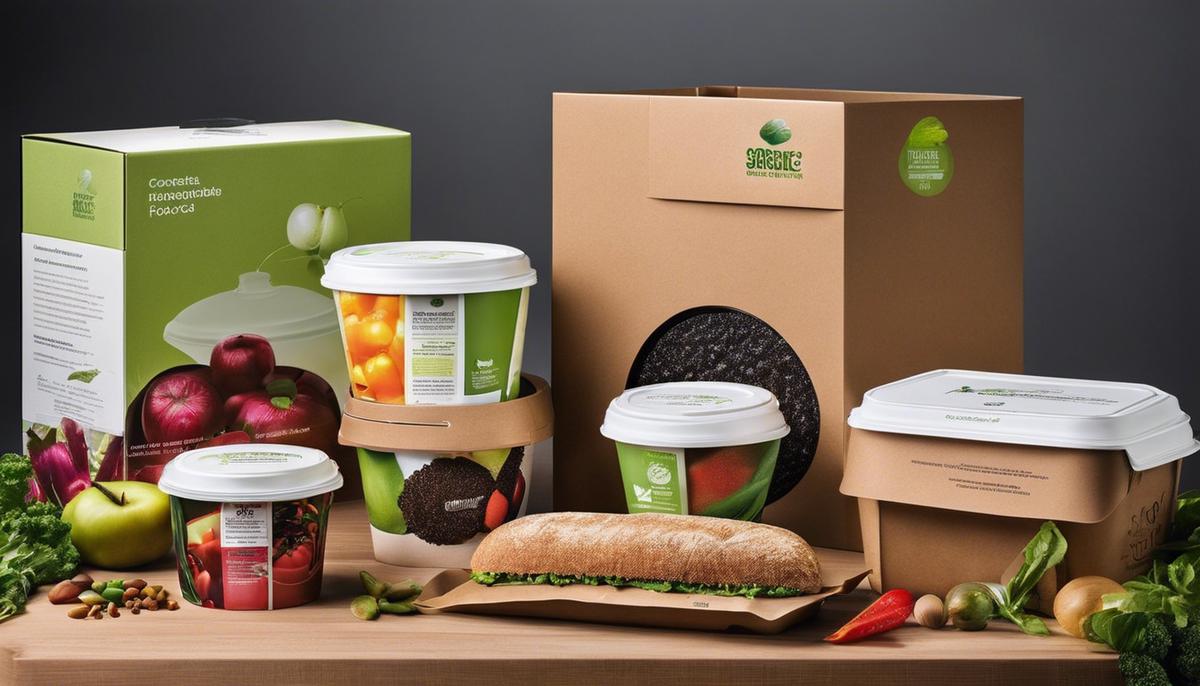
Plant-based and Lab-grown Food Developments
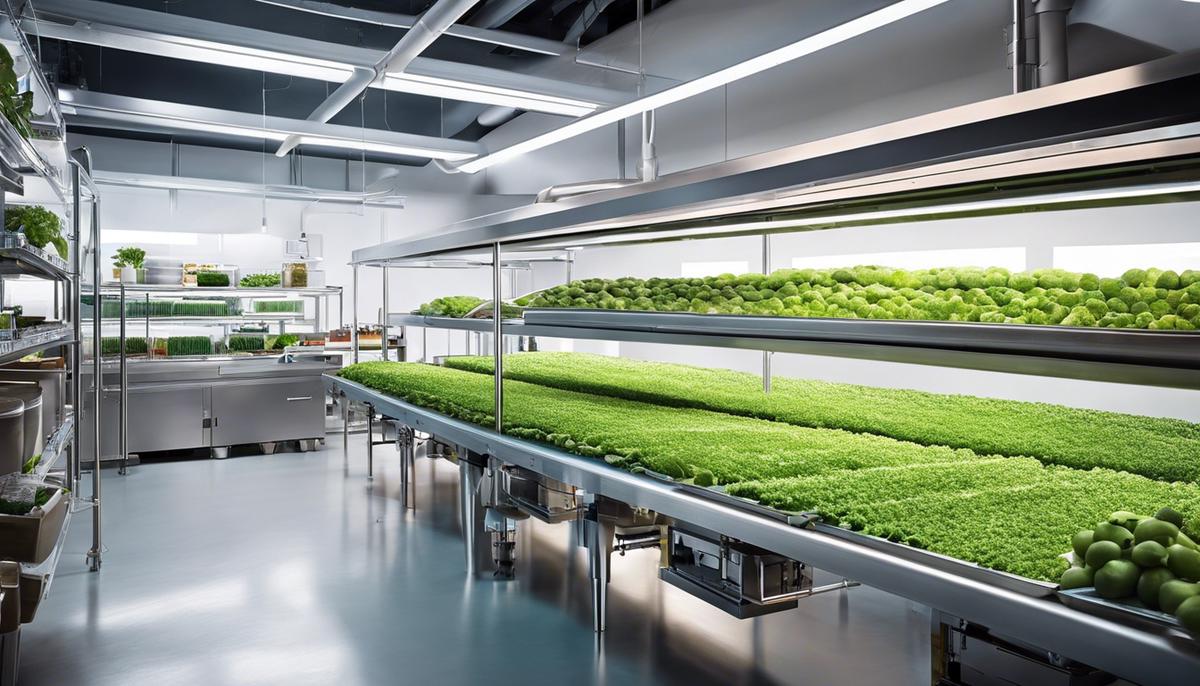
Novel Food Processing Techniques
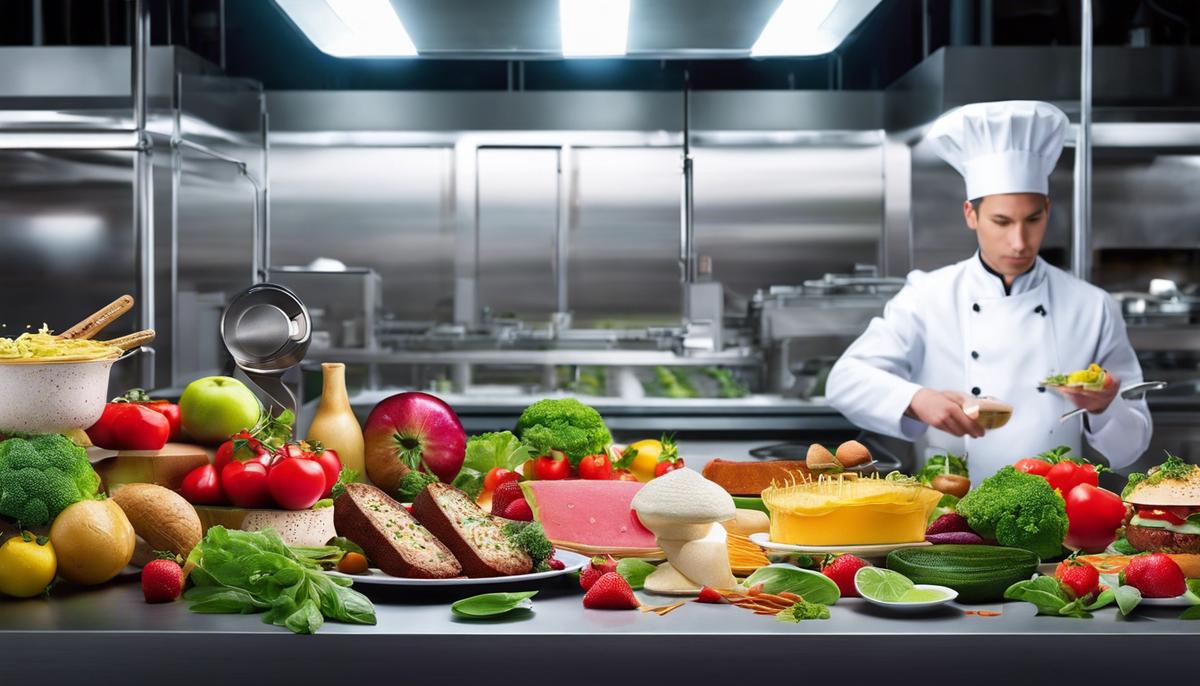
AI and Big Data in Consumer Preference Prediction